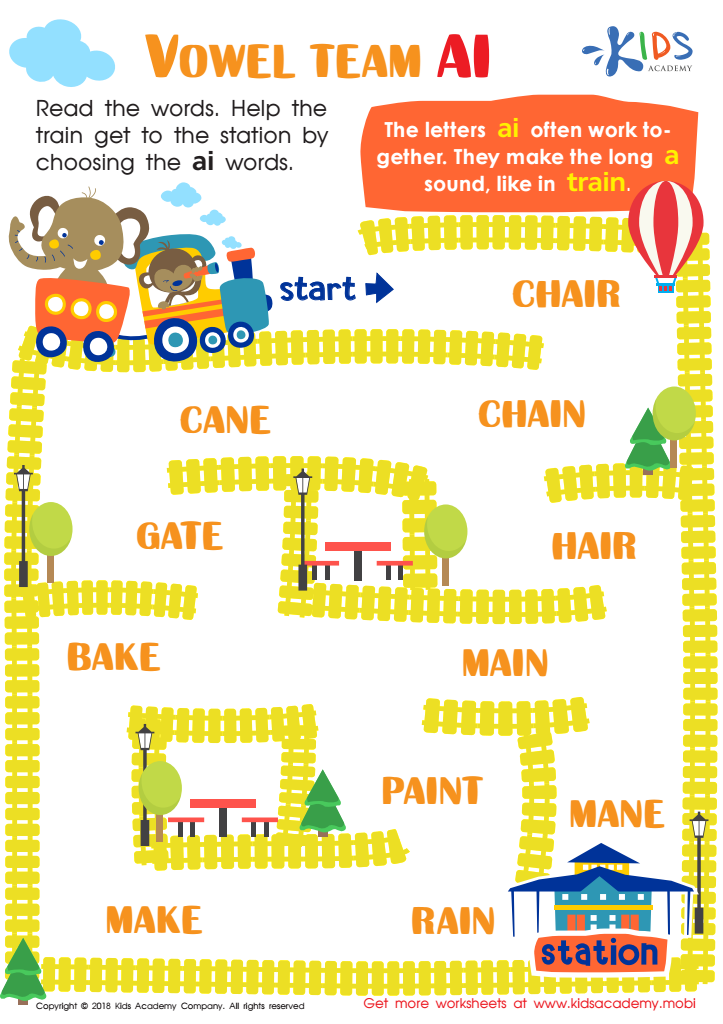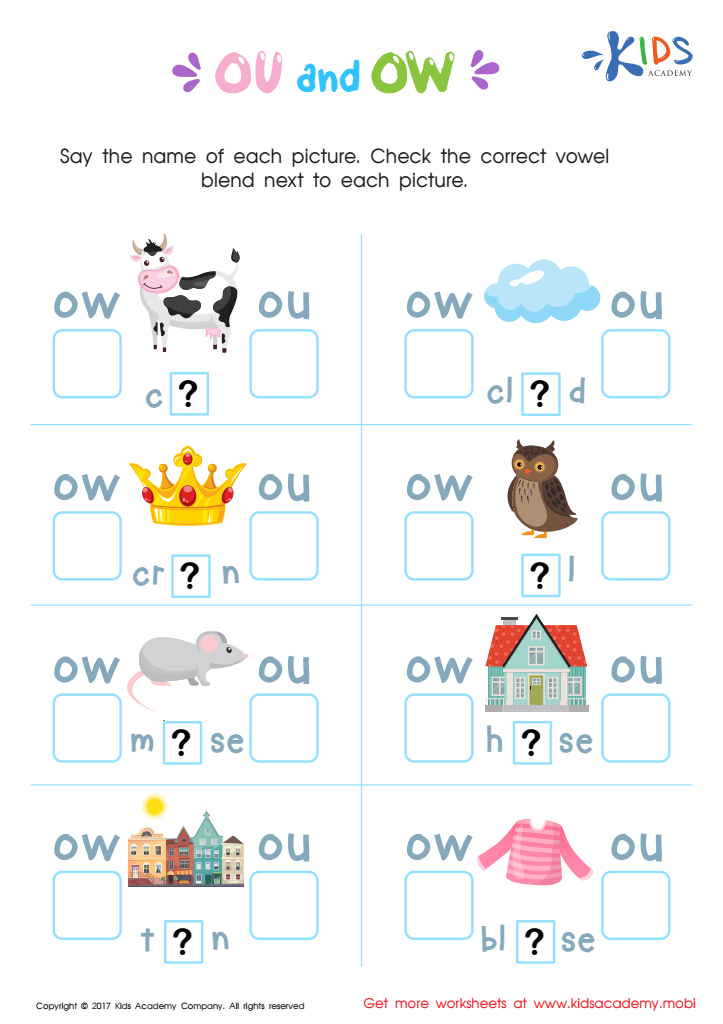Vocabulary expansion Normal Two Letter Phonics Worksheets for Ages 6-9
6 filtered results
-
From - To
Enhance your child's vocabulary and phonics skills with our engaging "Vocabulary Expansion Normal Two Letter Phonics Worksheets," specifically designed for ages 6-9. These worksheets provide a fun and interactive way to help young learners grasp essential phonetic concepts using two-letter combinations. Each activity encourages kids to explore new words, improve pronunciation, and build confidence in their reading abilities. Our printable resources are tailored to foster a love of language and strengthen literacy foundations. With a blend of exercises that cater to various learning styles, these worksheets are perfect for at-home learning or classroom activities. Unlock your child's potential today!


Blending Consonants: "Fl", "Bl" and "Gl" Printable


Vowel team ai Worksheet


Two Sounds for OO Worksheet


Medals: Al Spelling Worksheet


Missing Digraph: Part 2 Worksheet


OU and OW Words Worksheet
Vocabulary expansion is crucial for children aged 6-9, as it lays the foundation for effective communication and academic success. Normal Two Letter Phonics can play a pivotal role in this, as it provides young learners with the tools to decode and understand language. When parents or teachers focus on phonics, they help children recognize letter combinations, enabling them to sound out new words independently.
A strong vocabulary not only enhances reading comprehension, but it also promotes better writing skills and self-expression. With a rich vocabulary, children can convey their thoughts more clearly and confidently, laying the groundwork for successful social interactions and academic discussions.
Moreover, a robust vocabulary correlates with improved critical thinking abilities, as children learn to explore ideas and concepts more deeply through language. For parents and teachers, prioritizing vocabulary expansion through Normal Two Letter Phonics fosters an engaging learning environment where curiosity thrives.
Finally, early vocabulary skills can influence long-term academic outcomes; children with a strong foundation in phonics and vocabulary are more likely to excel in literacy-related tasks throughout their education. Investing time in these skills ensures children are better prepared for future learning challenges and opportunities.

 Assign to My Students
Assign to My Students















